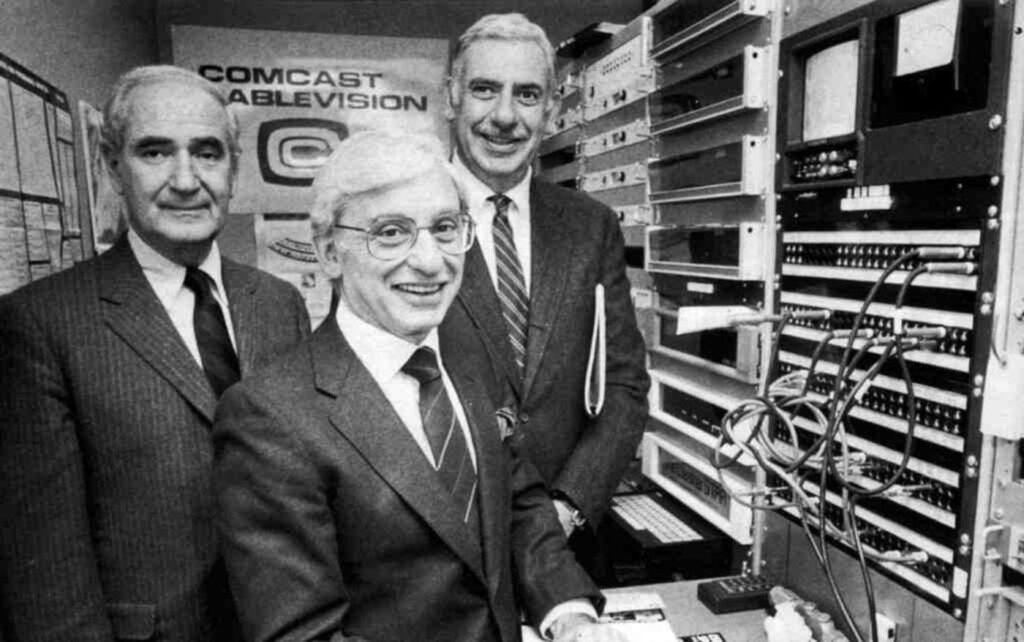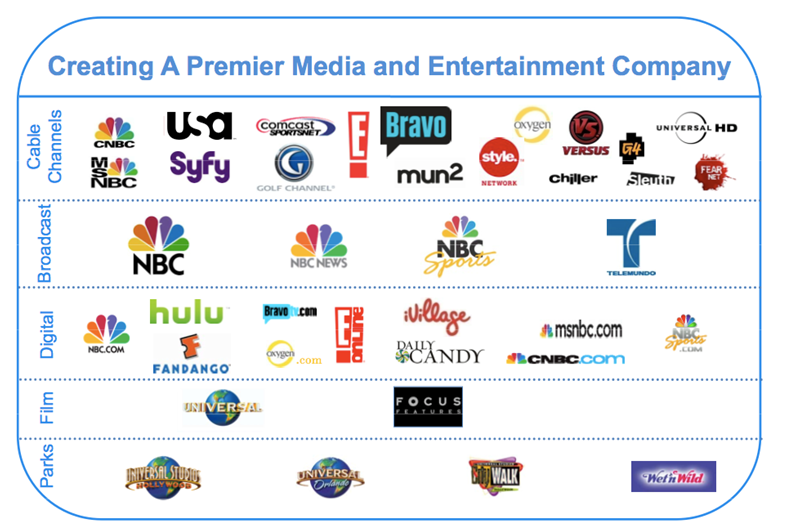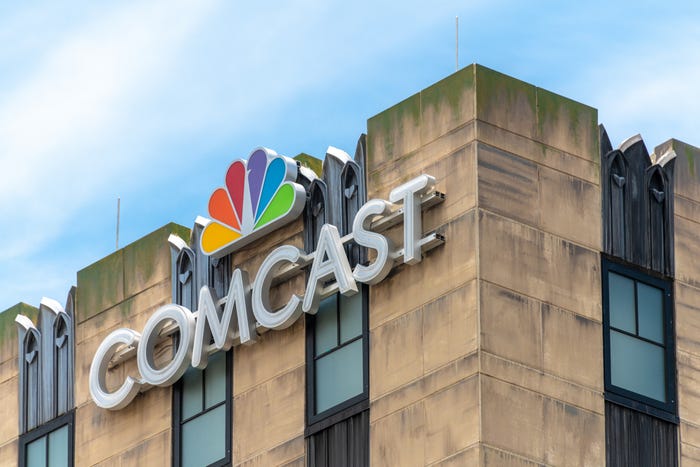Comcast is a global media and technology company with three primary businesses: Comcast Cable, NBCUniversal, and Sky. It was incorporated under the laws of Pennsylvania in December 2001. Through its predecessors, it has developed, managed and operated cable systems since 1963. Through transactions in 2011 and 2013, Comcast acquired NBCUniversal, and in the fourth quarter of 2018, it also acquired Sky.
History of Comcast : The Humble Beginnings
Prior to becoming the communications giant that Comcast is today, it was founded in 1963 by Ralph J. Roberts, Daniel Aaron, and Julian A. Brodsky with the purchase of a 1,200 subscriber cable system in Tupelo, Mississippi, under the name American Cable Systems. Not until 1969 did Comcast officially become known as Comcast Corporation after being incorporated in Pennsylvania where the company is still headquartered to this date.

The initial public stock offering for Comcast Corporation took place on June 29, 1972, for 430,000 shares at $7 per share under the NASDAQ stock symbol CMCSA. As of April 21, 2011, however, Comcast was trading at $25.34 per share with nearly three billion shares outstanding. Instead of a measly 1,200 subscribers, Comcast Corporation serves approximately 20.9 million video customers, 28.63 million high-speed Internet customers, as well as approximately 58 million homes in 39 states of the USA as well as Europe, as of 2020.
The year 1986 marked the first year for a long line of mergers and acquisitions by Comcast Corporation that has shaped how their organizational culture functions today. Comcast doubled in size to 1.2 million customers with the purchase of 26 percent of Group W Cable, and then followed this purchase by making a founding investment in the now popular television shopping channel QVC. By 1988, with the purchase of 50 percent of Storer Communications, Inc., Comcast possessed over two million subscribers, making it the fifth-largest cable operator.
With the acquisition of Maclean Hunter’s US cable operations in 1994, Comcast became the third-largest cable operator. Comcast continued to expand via cable with the acquisition of different television networks, and also entered into other areas of telecommunications such as the Internet with the launching of their first broadband product in 1996, and cellular telecommunications with the purchase of American Cellular Network Corporation in 1988.
After Comcast and AT&T broadband completed a $72 billion merger in 2002, Comcast became the nation’s largest video provider, the nation’s largest Internet service provider, as well as an innovative and reliable source for traditional and cellular phone services.
Products and services
The Marriage of Comcast and NBCUniversal
It was in 2004 that Comcast attempted and failed a hostile takeover attempt of Walt Disney Company. In its rejection notice, Disney stated the Comcast’s offer of approximately $50 billion undervalued the company by at least $7 billion based on the stock closing price on the day after the hostile takeover was announced. Comcast had hoped a marriage with Disney, and thus the acquisition of its ABC network, ABC Family, and ESPN cable outlets would have “created one of the world’s leading entertainment and communications companies with an unparalleled distribution platform and an extraordinary portfolio of content assets.”

Frustration after the unsolicited bid for Disney triggered Comcast to pursue other options, NBC Universal in particular. Comcast Corporation, in January 2011, announced the approved joint venture by the Federal Communications Commission between Comcast and General Electric that Comcast had bought 51 percent of NBCU for $6.5 billion in cash, and injected cable channels into the joint venture. As a part of this joint venture, Comcast controlled and managed NBC Universal’s operations, and each retained its popular consumer brand names. The value of NBCU lied in its lucrative cable channels – USA, Bravo, SyFy, CNBC, and MSNBC.
With the channels Comcast was contributing to the joint venture, it was suggested about 82 percent of the company’s cash flow would result from these channels. From a business perspective, it was thought that this deal would allow Comcast to make more of their own cable networks such as the Golf Channel and E! when paired with the NBCU cable channels such as Bravo, USA, and CNBC. The deal also initially seemed as a hedge against the prospect of a slowdown in the cable business as subscribers turn towards online and on-demand alternatives, by offering risk diversification.
While Comcast had long been interested in building a more viable competitor to previously spurned Walt
Disney Company’s ESPN with their additions of the Golf Channel, Comcast Sports Net, and Versus, it was not until Steve Burke become CEO of NBC Universal that this idea seemed practical. Upon the closure of Comcast’s acquisition of 51 percent of NBC Universal from General Electric, Comcast’s former chief operating officer, Steve Burke, was named NBCU’s new CEO. Within three months of being named CEO, Burke began angling for sports deals and pushing a big shift in how the entertainment company would use them in order to stave off online competition and raised NBCU’s standing among its chief network competitors.
The Success Factors of Comcast
1. Resources
Comcast’s resource system is well defined and established, able to successfully compete with any of the US’s top communication networks. From the top management, led by CEO Brian L. Roberts, intangible resources begin with a terrific leadership structure that has helped to create a media giant in Comcast. Additionally, Comcast has a large network for service and operations. They are technology professionals who not only deliver the products but those who must also maintain them as well. As for tangible resources, the majority of Comcast’s assets can be defined by product research and development, technology, and systems development.
The key to Comcast’s resource chain is to create or obtain the content, create a way to deliver it, and finally implementation. These resources and abilities, combined with their already strong logistics, marketing, and customer service departments, have created a strong infrastructure that is more than capable and prepped for expansion. A major expansion is on the horizon for Comcast, as their acquisition of NBC Universal has vastly expanded their ability to obtain new technological and content capabilities that are both tangible and intangible to their customers.
Comcast leads the field in terms of technology innovation through product research and development and this supporting activity allows it to offer a differentiated service. The blending of sports assets between Comcast and NBCU enabled the company to make an attempted challenge at ESPN for sports programming supremacy. NBC Sports Group was a result of this merger and consist of NBC Sports, Versus, the Golf Channel, and 11 of Comcast SportsNet channels, as well as digital assets.
2. Capabilities
It is through this vast resource system that has not only allowed Comcast to grow into a multimedia giant but has created the opportunity to grow into a US national leading provider. Comcast’s acquisition of NBC Universal has given Comcast the opportunity to create a sustainable competitive advantage through the only area Comcast may have been deficient in. Sports content and broadcasting is a large and rapidly growing segment of the American viewing audience, and the merger with NBCU will be a springboard for Comcast to become a leader in this area.
Similarly with resources, the strength of Comcast’s capabilities is driven through their Research and
Development, technology systems development, and distribution. As said best by Matt Eaton, “because of Comcast’s size, it is able to secure favorable distribution deals with the biggest content owners, such as the National Football League and Disney. In addition, Comcast forms close ties with its technology partners, which strengthens their ability to offer leading products to their customers.
3. Core Competencies
There are three main core competencies that Comcast uses to thrive in the US media industry. The first is to create and provide products and services that are better, faster, and more advanced than their competition. As this is the main key factor for success in the industry and technological advances can make content more compelling, it is important for Comcast to focus on both innovation and delivery.
Secondly, Comcast’s ability to offer multi-service tethering options. Comcast’s large network has allowed it to compete not only in the cable television market but phone services and internet as well. Combining these services into a bundled package has appealed to consumers for convenience and budget concerns. Their ability to reach more people through their network is what has set them apart from the competitors.
Comcast’s third main competency is its ability to create and deliver a wide range of services to customers. Due to their size, they have the ability to not only deliver service through multiple outlets but secure rights to additional content as well. As this is the growing trend in the cable industry, it is essential for them to continue to develop this competency in order to grow and sustain a competitive advantage.
Also Read: Verizon Communications – The Making Of World’s Leading Teleco
4. Competitive Advantage
Comcast leads the field in terms of technology innovation through product research and development and this supporting activity allows it of offer a differentiated service. Comcast has a large amount of capital invested in their network systems, which has allowed them to be able to deliver a product that is better and different from the competition. Comcast is a leader in product innovation, but content delivery as well. This is their most valuable advantage and will help them to compete with anyone in the industry.
However, many consumers wish for more than the television, phone, and internet value bundles that Comcast offers. Therefore, it was necessary to add to their product offering more compelling content that exists online as well as live sports programming in order to compete with the free or cheap online substitutes.
Business-Level Strategy
Comcast Corporation decided to operate with a differentiation strategy and thereby positioning itself differently from its competitors by providing its customers with an acceptable level of cost, with unparalleled products and services. Value is created for the customer in how Comcast chooses to differentiate its products or services from those produced by its competitors. Their investments via mergers and acquisitions have increased their distribution channels and enabled the company to become the nation’s largest cable and Internet service provider, as well as the ability to offer their product affordably to Comcast consumers.
Compared to their primary competitors, Comcast offers competitive pricing through their bundle, double play deals, digital cable, high-speed Internet, and digital voice offerings. Also, their investments in new technologies and content have enabled Comcast to further differentiate their product offerings with an on-demand offering of more than 10,000 selections each month. Comcast’s HD service offers more
programming than any other service provider. Comcast makes accessible more than 1,000 HD movies and television shows monthly.
The industry-leading Comcast.net portal and their high-speed Internet access offers access to online
television, the ability to check email, get the latest sports scores, and provides access to more than 90,000 videos available at any given time.le at any given time.
Also Read: Marketing Strategy and Marketing Mix of Comcast Corporation



